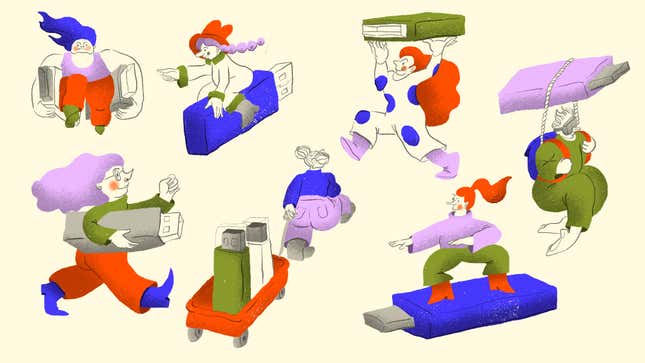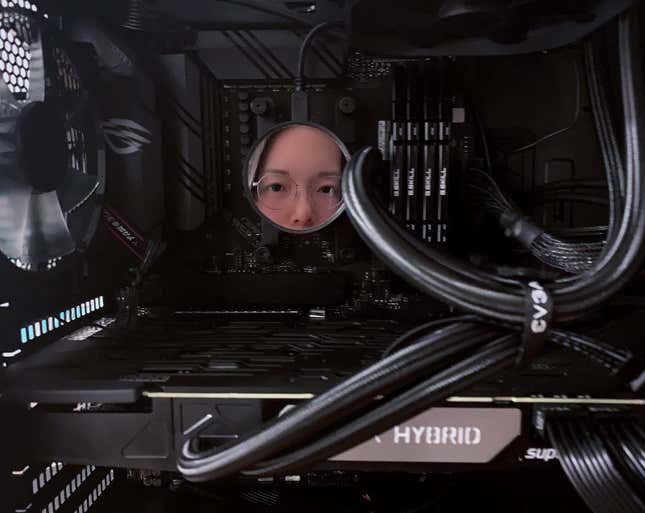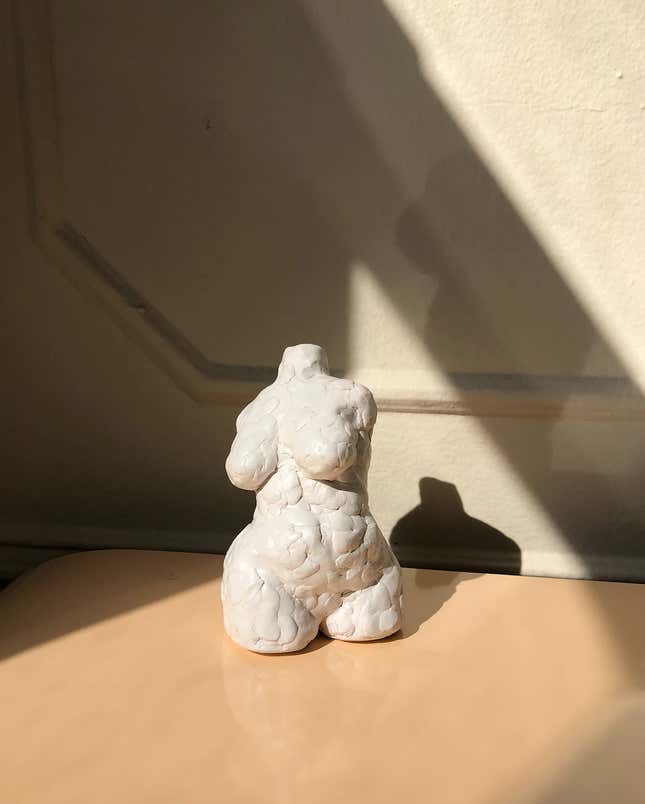
For decades before the advent of digital cameras and sophisticated flash storage devices, artists shared their portfolios on 35 mm slides. Submitting artwork for exhibitions, or simply sharing works with audiences far away, meant shipping unwieldy boxes of slides to be viewed through a projector. Museums amassed thousands of slides, showing close-ups of Picassos and ‘80s haute couture, sculptures, and antiquities.
In the last two decades, innovations in flash memory have helped transform how artists work — and how they transport their works. Samsung, a pioneer of flash memory tech since mass-producing the first 1Gb NAND flash in 2002, has helped pave the way for such a shift. We asked four creatives to share the current contents of their flash storage devices, giving us a glimpse into how technology like Samsung’s aids their artistic practices. Here’s what they shared with us.
Christina Lu, Freelance Motion Designer

Christina Lu’s designs are characterized by a lively palette and whimsical characters. “I like using vibrant colors to create simple and delightful animations,” Lu explains. Her work has captured the attention of a wide array of clients, ranging from digital media giants like Samsung to high-profile musicians.
Like other artists, Lu keeps a repository of inspiration to draw from on a flash storage device. Samsung offers a wide variety of flash storage options, like a portable SSD which is ideal for storing the kinds of large files Lu often works with. She pulls references from social media, cartoons, movies, and her favorite illustrators — along with relevant photos she captures herself — into folders organized by her ongoing projects.
Lu’s flash drives are also brimming with pieces of her works in progress: design assets, After Effects files, and high-resolution MOVs of her animations. The files take up a lot of space — but flash storage technology has caught up to her needs, allowing her to keep everything on one device. “It streamlines my workflow,” Lu says. “It’s very easy to plug in a flash drive into a smart TV to review your work on a larger screen, without the fuss of finding an HDMI cable or relying on a spotty connection.”
“I also like the idea of portability,” Lu explains. “If I’m working on a heavy animation project, and I need to go to the studio, I can bring my work with me easily, without a bulky hard drive.” This move away from bulky hard drives was in part made possible by Samsung’s key development of SSD. Unlike traditional HDD, which stored data by physically rotating a thin magnetic film, SSD store data digitally, allowing for a smaller form factor and increased portability.
Mark DeNardo, Ambient Musician and Soundscape Artist
Mark DeNardo, who also goes by MDN, is a software engineer by day and an ambient musician by night. His music, which focuses on synthesis and sampling, and alludes to his engineering background through the use of concepts such as recursion, has appeared in video games and films.
DeNardo currently has eight flash storage devices in his inventory, each containing different elements that play into his work. Flash storage devices, like Samsung’s microSD memory cards, are ultra portable and come in a variety of storage sizes, all the way up to 512GB.
DeNardo’s flash drives are occupied by video games and music from his old bands — including tracks from Graffiti Monsters, a chiptune speedpunk band, and Fables, who covered Black Flag on acoustic guitars.
One drive is packed with assets for an after-school class he taught, including Sonic Pi — a live-coding music environment for the Raspberry Pi — and Minecraft hacks. “Kids were always trolling on Minecraft, so I had to make them play in creative mode when we weren’t coding in Java,” DeNardo says.
More music and samples populate DeNardo’s memory cards. One is filled with samples from albums DeNardo’s grandmother gave him, as well as films that inspired him, such as Toho’s Hakujaden. Another is from a digital recorder that DeNardo used to make soundtracks and albums.
“I like technology that is portable,” says DeNardo. “It allows me to travel with it and go to the forest with it, making woodsy sounds … that’s my main jam. I like making ambient sounds in the forest or somewhere quiet, like on a hike.”
Anne Louise Korallus-Shapiro, Sculptor
Anne Louise Korallus-Shapiro is the sculptor behind Anonomy Sculptures, a Brooklyn-based small business that sells clay figure art with a focus on body positivity. Each sculpture starts with small balls of clay, which are built up, one-by-one, until the piece is complete.

Korallus-Shapiro’s flash storage device is packed with photos of her sculptures and the inspiration behind them. She works with each client to collaborate on colors, skin tones, and size. “I tend to save photos of rigid geometric shapes the most — that’s what is inspiring me right now,” she says. Her drive also holds videos of her building process, from start to finish.
Thanks to breakthroughs in complex 3D vertical NAND cell-stacking technology, Samsung paved the way for a new era of storage with the release of the Portable SSD T1 in 2015, which can hold up to a full terabyte of data. That equates to roughly 500 hours of HD video — like Korallus-Shapiro’s footage of her sculpture building process — that could be stored on a device little bigger than a business card.
Korallus-Shapiro is also working on turning her sculptures into lamps. Her flash drive is now host to hardware tutorials and deco lamp images for inspiration.
“I originally began sculpting female forms as a hobby to help me work through my own complicated relationship with my body,” Korallus-Shapiro explains. “I hope my work can serve as a daily reminder to appreciate every part of yourself, soft tummy and all.”
Jennifer Hernandez / JWords, Electronic Producer
Electronic producer Jennifer Hernandez, or JWords, uses hardware synthesizers to create her music, which she performs at venues throughout New York City. Most recently, she dropped an album with a friend under the duo name H31R.
Hernandez told us that she’s inspired by creating her own sounds, using her arsenal of synthesizers and drum machines to develop unique sounds. Those sounds get recorded onto her computer and composed into music or made into sound packs — folders that contain various snippets of sound. Hernandez uses flash storage devices to move her music between computers and drum machines, and to share her work with others. The plug-and-play nature of these devices, like Samsung’s USB flash drives, allow for an easy, on-the-go storage solution for creatives like Hernandez.
“It’s a cool way to transfer sound,” Hernandez says. “If I’m going to give somebody a sound pack, I’ll put it in a flash drive and give it to them so they can download it.”
Hernandez advises all artists to keep their work backed up outside of their hard drives. “For everybody that’s reading, it’s always good to have multiple flash drives with your music or art saved in it, so if something happens, you always have an extra copy,” she says.
From their early emergence as the go-to storage solution in portable MP3 players to the powerful new Universal Flash Storage tech developed to keep our smart devices humming, Samsung continues to lead the charge in the development and enhancement of NAND technology that helps creatives like these in their craft. Click here to find out how and learn more.
This article is a sponsored collaboration between Samsung and G/O Media Studios.
Angela Wang is a freelance writer living in Queens.
